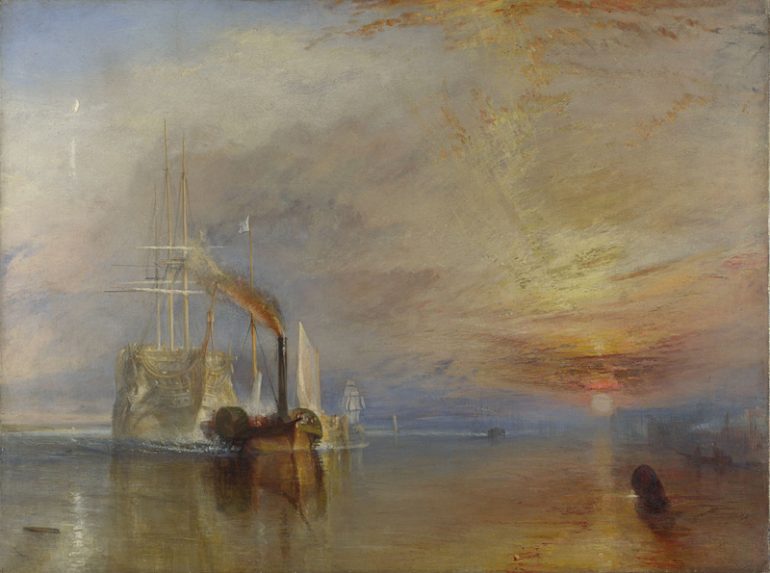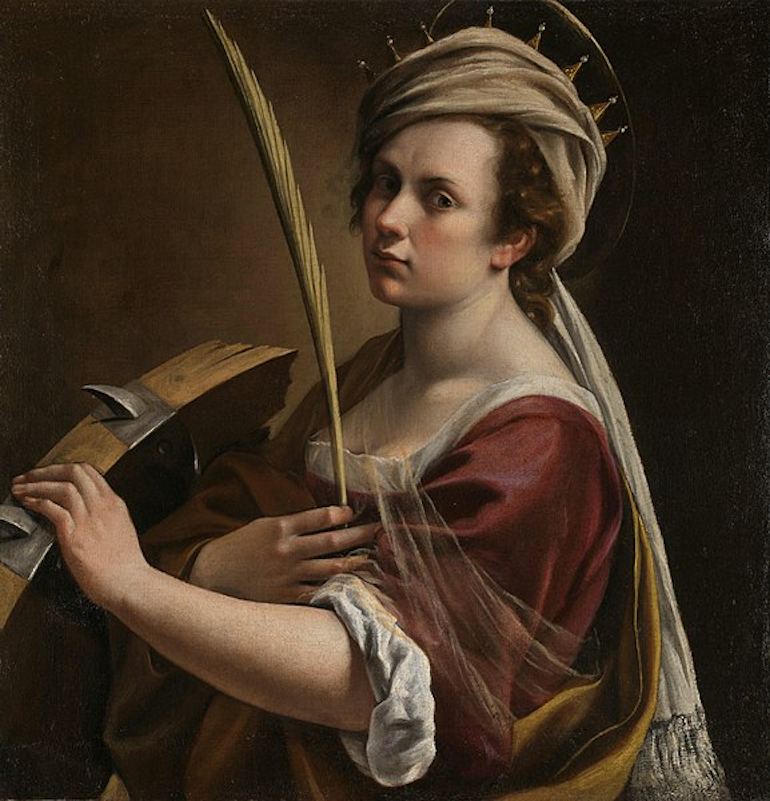The main impetus for the founding of The National Gallery was the purchase, by the British government, of thirty-eight paintings – including masterpieces by Rembrandt, Rubens and Titian – from the collection of John Julius Angerstein, a successful banker and marine insurance broker born in St Petersburg to German parents. When the gallery first opened to the public, in May 1824, it was housed in Angerstein’s former home at 100, Pall Mall.
In 1838, the gallery moved to its current location in Trafalgar Square, literally at the heart of London. From the outset, entry was free and this policy has been maintained. Today, you can still wander in free of charge and enjoy a world-class collection which has grown considerably since; it now includes over 2,300 paintings, most of which are usually on display. The world is a very different place now and the art historical approaches employed by curators have evolved, too. Yet, and perhaps because of the latter, people still flock to see and enjoy the art of past centuries. There are many different reasons for visiting The National Gallery 200 years after its foundation, but let me mention a few facts that may explain its continuing wide appeal.
 Celebrating 200 years of The National Gallery in London. Photo Credit: © Ursula Petula Barzey.
Celebrating 200 years of The National Gallery in London. Photo Credit: © Ursula Petula Barzey.
Claude Monet & JMW Turner at The National Gallery
In 1870, at the outbreak of the Franco-Prussian war, the French painters Claude Monet and Camille Pissarro sought refuge in London. We know they visited The National Gallery where they could admire the innovative landscapes by JMW Turner and John Constable. In 1885, Monet and Pissarro signed a letter, along with several other ‘Impressionist’ artists, sent to London’s Grosvenor Gallery, praising Turner as ‘un grand maître de l’école anglaise.’ Although Monet criticised Turner as being too ‘exuberantly romantic,’ there is little doubt that Monet’s later Thames paintings, created while staying on the top floor of the Savoy, were a response to Turner and his radical experiments with colour and atmospheric effects.
 The Fighting Temeraire by JMW Turner, 1839, the National Gallery, London. Photo Credit: © Public Domain.
The Fighting Temeraire by JMW Turner, 1839, the National Gallery, London. Photo Credit: © Public Domain.
Women Artists at The National Gallery
In 2018, The National Gallery bought a rare painting by the 17th-century Italian artist Artemisia Gentileschi for £3.6 million. The acquisition reflected a long-held aim of increasing the number of works by important women artists, still only a disappointing total of twenty-one in the whole collection. In the words of Hannah Rothschild, the first woman chairing The National Gallery Board of Trustees: ‘Gentileschi was a pioneer … one of the most progressive and expressive painters of the period. One of a handful of women who was able to shatter the confines of her time.’ Most of Gentileschi’s paintings represent a strong or resilient woman as the main protagonist, sharply contrasting with the way most male artists represented women at the time. You can now enjoy ‘Self Portrait as Saint Catherine of Alexandria’ as well as other works by women artists in the gallery, such as Rosa Bonheur, Berthe Morisot and Elisabeth Louise Vigée Le Brun.
 Self portrait of Artemisia Gentileschi as Saint Catherine, c 1616 by Artemisia Gentileschi, National Gallery, London. Photo Credit: © Public Domain.
Self portrait of Artemisia Gentileschi as Saint Catherine, c 1616 by Artemisia Gentileschi, National Gallery, London. Photo Credit: © Public Domain.
Hogarth’s Blacks at The National Gallery
A rare British artist represented in the founding collection was William Hogarth. Angerstein bought Hogarth’s series of six paintings created in 1745 – ‘Marriage a la Mode’ – at a Christie’s auction. Intended for the print market, the series is a sharp but humorous satire on those who only marry for status and money. Although the pictorial complexity of these pictures have been successfully interpreted by many art historians over the decades, a central figure in scene 4. ‘The Toilette’ has been ignored by virtually all of them. However, this key figure, a Black servant offering a cup of hot chocolate, is the focus of David Dabydeen’s acclaimed and revealing study of ‘Marriage a la Mode’ in ‘Hogarth’s Blacks, Images of Blacks in Eighteenth Century English Art’ published in 1987. Dabydeen demonstrates how Hogarth used the Black figure as a satirical device to laugh at the supposedly ‘civilised’ British upper classes. He also highlights how Hogarth’s Black figures reveal links between art and colonial wealth. As Britain continues to evaluate its involvement and the consequences of the Atlantic slave trade, Dabydeen’s interpretation reminds us that art is not produced in a vacuum but in a continuously evolving social and historical context. Indeed, Angerstein was commercially a beneficiary of the slave trade in the marine insurance business on which he based his fortune.
 The Toilette (detail), Marriage a la Mode by William Hogarth, 1745, National Gallery, London. Photo Credit: © Public Domain.
The Toilette (detail), Marriage a la Mode by William Hogarth, 1745, National Gallery, London. Photo Credit: © Public Domain.
Art & James Bond at The National Gallery
You may be forgiven for not seeing The National Gallery as the centre of British espionage but 007 might wish to disagree. In one of the most successful Bond films ever, Skyfall, which premiered in 2012 and starring Daniel Craig as the eponymous here, Bond walks into The National Gallery to meet ‘Q’ and sits down opposite Turner’s ‘ The Fighting Temeraire’ of 1839. In the brief conversation that follows, ‘Q’ suggests the picture represents a ‘grand old war ship ….ignominiously hauled away to scrap,’ a claim that most Bond aficionados believe should be understood as a symbolic reference to the turning tides of secret intelligence methods. Bond replies that all he sees is ‘a bloody big ship,’ perhaps suggesting that a stubborn Bond will triumph over all changes. This Turner masterpiece is however not the only National Gallery star of a Bond movie.
In the 1962 film ‘Dr No,’ James Bond (played by Sean Connery) stops to admire Francisco de Goya’s portrait of Arthur Wellesley, Duke of Wellington, painted after the famous general had defeated Napoleon’s troops in 1812. In the film, the (replica) Goya picture is owned by the arch–villain Dr No, and to audiences at the time, this would have been a very timely reminder of the fact that the original had recently been stolen from The National Gallery and was stilling missing when ‘Dr No’ had its premier. This, as it turned out, rather peculiar theft is the subject of another more recent film (2022) called ‘The Duke.’ It stars Jim Broadbent as Kempton Bunton, a retired taxi driver who walked into Scotland Yard in 1965 claiming to have stolen Goya’s portrait of Wellington. The picture is now back at The National Gallery!
 Portrait of the Duke of Wellington, c 1812 by Francisco Goya, National Gallery, London. Photo Credit: © Public Domain.
Portrait of the Duke of Wellington, c 1812 by Francisco Goya, National Gallery, London. Photo Credit: © Public Domain.
Spiritual Sustenance at The National Gallery
In 1939, at the outbreak of the Second World War, works in the collection were moved to safety to locations in Wales and to a disused slate mine. Then, in 1942, a letter was sent to The Times with the following request: ‘Because London’s face is scarred and bruised these days we need more than ever to see beautiful things…. I would welcome the opportunity of seeing a few of the hundreds of the nation’s masterpieces now stored in a safe place.’ The National Gallery promptly responded by displaying one single painting for a few weeks. This was Rembrandt’s ‘Portrait of Margaretha de Geer, Wife of Jacob Trip’ (1661); around six hundred visitors a day turned up at the gallery eager to see this extraordinary and very moving representation of an elderly woman still exuding great inner strength. Proof, if still needed, of art’s ability to provide continuous inspiration and lasting ‘food for thought,’ not least during difficult times.
 Margaretha de Geer, wife of Jacob Trip, by Rembrandt van Rijn, c 1616, the National Gallery, London. Photo Credit: © Public Domain.
Margaretha de Geer, wife of Jacob Trip, by Rembrandt van Rijn, c 1616, the National Gallery, London. Photo Credit: © Public Domain.







Leave a Reply